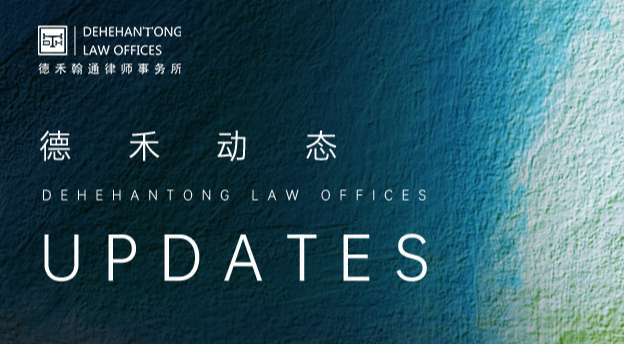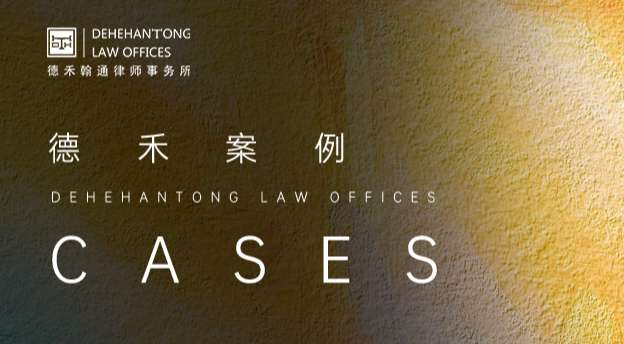Introduction to the U.S. Export Control Regulations (EAR)
China's "Regulations on Export Control of Dual-Use Items" will be formally implemented on December 1, 2024, which is a supplement, improvement and promotion of China's export control regulations. We also hope that the relevant supporting laws and regulations and systems will be further strengthened and perfected with the rise of national strength. At the same time, the U.S. government continues to use its export controls to adjust the global supply chain, an important part of which is our country. Although the information has not been confirmed, there is no doubt that the United States routinely uses export controls to maintain its economic interests/position, in this regard, we think it is necessary to give a brief introduction to the United States export control system.
Section 1. Legal system of American export control
The following set of laws, regulations and rules constitute the complete export administration system of the United States and are the primary legal basis for enforcement by the relevant law enforcement agencies of the United States.
1. Law
The following three pieces of legislation, all enacted by Congress and signed by the President, form the basis of the U.S. Export Control system and are the highest level of U.S. export control laws: the Export Control Reform Act (ECRA); The Arms Export Control Act (AECA); International Emergency Economic Powers Act (IEEPA).
2. Regulations
In addition to the laws, the relevant government departments in the United States have also formulated a series of Export control Regulations according to the authorization of the above laws, such as: the Export Administration Regulations (EAR) formulated by the United States Department of Commerce; The U.S. Treasury Department's Iranian Transactions and Sanctions Regulations (ITRS); International Traffic in Arms Regulations (ITAR) established by the U.S. Department of State under the Arms Export Control Act.
3. Rules and Guidelines
In order to clarify specific export control items and implementation rules, relevant government departments further formulate relevant rules and guidelines in accordance with the above laws and regulations, which mainly specify the specific products and technologies subject to control and the countries where the export is restricted or prohibited, such as: The Commerce Control List (CCL) developed by the U.S. Department of Commerce; The Commerce Country Chart (CCC) developed by the U.S. Department of Commerce; The United States Defense Lists (USML), developed by the United States Department of State, etc.
Section II. Export control Regulations
EAR (Export Administration Regulations).
The EAR is the first Export control regulation formulated and implemented by the Bureau of Industry and Security (BIS) (Bureau of Industry and Security, Department of Commerce) in accordance with the Export Administration Act (EAA). However, the EAA was not a permanent piece of legislation, and after several amendments and extensions, it lapsed in 2001, after which the EAR was approved by the President under the International Emergency Economic Powers Act (IEEPA). The Executive order issued by the International Emergency Economic Rights Act (EAA) on its authorization continues in effect until the enactment of the Export Control Reform Act of 2018 (ECRA), which replaces the original EAA as the upper law and basis for the EAR.
There is a list under the EAR called the CCL List, and all items under the EAR control that are not included in the CCL list are referred to as EAR99.
1.BIS (Bureau of Industry and Security, Department of Commerce)
The U.S. Department of Commerce - BIS is responsible for implementing and enforcing EAR regulations. The EAR authorizes the Department of Commerce, in consultation with other relevant agencies, to license and regulate the export and re-export of dual-use items and technologies and individual military items and technologies. Commerce also controls certain exports and re-exports for certain foreign policy reasons, particularly those designated by the Secretary of State as international terrorist States and those countries, entities, and individuals subject to U.S. or United Nations sanctions.
In addition, the Commerce Department has the authority under the Trading with the Enemy Act and the International Emergency Economic Powers Act to prohibit businesses or other entities from engaging with certain countries, Entities and individuals conduct certain transactions.
2.CCL (Business Control List)
The America-origin items specifically listed in the CCL also include products and technologies that are not listed in the CCL but are designated under its jurisdiction under other laws and regulations.
In the list, all products and technologies originating in the United States are grouped into ten categories: (1) nuclear materials, facilities and equipment, and miscellaneous; (2) Materials, chemicals, microorganisms and toxins; (3) Material processing; (4) Electronic products; (5) Computer; (6) Telecommunications and information security; (7) lasers and sensors; (8) Navigation and avionics equipment; (9) Ocean; (10) Propulsion systems, spacecraft and related equipment. Five functional groups, A, B, C, D, E, such as group A is the system, equipment and parts; Group B is the test, inspection and production equipment. Each article is assigned a specific Export Control Classification Code (ECCN) according to its category and function group. Each code consists of five digits and letters, each representing a different meaning, including product category, product group, general reason for control, strict reason for control, and serial number of similar items. The most important function of the Export Control Classification Code (ECCN) is to determine whether an article is a controlled article and whether a license is required for the export of the controlled article.
In addition, "controlled article" also includes a product produced or manufactured using a "controlled article" or a product or technology containing a "controlled article".
3. CCC (Commerce Country Chart) and "Entity List"
CCC and the "Entity List" are used to collectively refer to BIS export restrictions on specific objects, and any country, region or entity falling into the list can become the object of BIS export prohibition.
The prohibited products and licensing standards are different in each country, and the BIS will explain the reasons for the embargo of specific goods in different countries in the CCC. The basic method for determining the criteria for an embargo by a country is to look in the table of the List of Commercial States (where the ordinate is the name of all the countries and the ordinate is the reason for the control) to see if a country has a corresponding reason for the control. These reasons include: (1) Chemical & Biological Weapons; (2) Nuclear Nonproliferation; (3) National Security; (4) Missile Tech; (5) Regional Stability; (6) Firearms Convention; (7) Crime Control; (8) Anti-Terrorism.
The commonly referred to as "embargoed countries"refers to countries that are fully embargoed and will not obtain BIS export licenses, including Iran, Cuba, Sudan, North Korea and Syria.
3A001 Electronic parts and parts specially designed for them, as follows (see List of Controlled Articles). Licensing requirements, regulatory reasons: NS, MT, NP, AT
Licensed Use Exceptions (LVS) : Not applicable for MT or NP
Applicable to:
$1500: 3A001.c
$3000: 3A001.b.1, B.2, b,3, B.9,.d,.e.,.f, and.g.
$5000: 3A001.a (except for a.1.a and a.5.a when regulating MT) and.B.4 to b.7.
GBS: for 3A001.a.1.b, a... 2 to A.12 (except when regulating MT.a... 5.a), b.2, b.8 (except for TWT amplifiers over 18 GHZ), b.9., b.10,.g, and.h.
CIV: Applicable to 3A001.a.3, a.4,a.7 and a.11.
The following table, taken from the Commerce Department country Table, shows the control of export commodity classification numbers for exports to Australia, China and Sudan, as well as the controlled grounds in the areas of chemical and biological weapons, nuclear non-proliferation, national security and counter-terrorism:
For the sake of clarification, assume that the product of a company identified in the figure above under paragraph 11 (a) of export Commodity Classification No. 3A001 is a digital integrated circuit. The controlled grounds identified under the application of paragraph 11 (a) under export commodity Classification Number 3A001 are National security column 2 (NS2) and counter-terrorism column 1 (AT1). By referring to the table above, the company can determine that its products are not subject to restrictions on export to Australia. However, exports of its products to China are controlled for reasons of national security; The export of its products to Sudan is also controlled for reasons of national security and terrorism. Because exports to Australia do not require a license, the analysis of exports to Australia can stop there. For exports to China or Sudan, companies must analyze whether there are licensed use exceptions (LVS).
Some of the most common licensing exceptions include:
1) shipment of limited value (license exception LVS);
2) shipment to country group B (GBS);
3) shipment to civil end-users (" CIV ").
Whether these three licensing exceptions apply to a particular product can be determined by the description of the product at the top of the export commodity classification number. For example, the export commodity classification number 3A001 to which the digital integrated circuits classified in the above figure are applied has the following description.
Permission exception
LVS: Not applicable to MT or NP
Applicable for: 1500 USD: 3A001.c
$3,000:3A001.b1, b2, b3, b9, d, e, f and g
$5,000:3A001.a (except for a.1.a and a.5.a due to MT restrictions) and b.4 to b.7
GBS: for 3A001.a.1.b, a.2 through a.12 (except for a.5.a when MT is limited), b.2, b.8 [except TWTAs over 18 MHZ], b.9, b.10, g, and h
CIV: Applicable to 3A001.a.3, a.4, a.7 and a.11
According to regulatory requirements, export to China is not subject to license exceptions LVS and GBS. However, a license exception CIV may apply to exports to China for civilian end-users/uses. Electronic integrated circuits are classified under Export Commodity Classification No. 3A001.a.11 and a licence exception CIV may apply. Therefore, as long as the exporter does not know (or has no reason to know) that the product will be converted to military use, it can export the product to civilian users in China under the exemption of the licensed exception CIV. As Sudan is an embargoes country, no export exception applies to the export of electronic integrated circuits to Sudan. Therefore, before exporting the product to Sudan, the exporter must apply to BIS for a transit-specific export license.
4. Apply for a permit
The vast majority of exports do not require a license because products are not controlled by their export destination, or because licensing exceptions can be applied to transactions. For a small number of other exports, or export transactions that may violate the EAR, the exporter must first apply for a license from the Department of Commerce's Bureau of Industry and Security (BIS) to obtain special authorization for the transaction.
Exporters can submit their export license applications online by following the Simplified Network Application Process of the Department of Commerce's Bureau of Industry and Security (BIS).
Case study
Japan's NMO Corporation intends to acquire ABC Corporation because NMO Corporation wants to use ABC Corporation's advanced direct imaging equipment in NMO Corporation's products manufactured in Japan and China. ABC does not know if an export license is required to ship its products to Japan or China, but it can be confirmed that the equipment did not originate from a military project and is not designed or modified for any military use. NMO Corporation and ABC Corporation argued that because the equipment was manufactured in the United States, it was regulated under the Export Administration Regulations; However, the equipment is not a defense material controlled by ITAR (International Traffic in Arms Regulations), and no other agency has exclusive export jurisdiction over the equipment.
After reviewing the Commodity Control List, ABC believes that because ABC's direct imaging equipment is an optical sensor, it may be classified under export Commodity classification numbers ECCN6A002, ECCN6A992 or EAR99 of the Export Administration Regulations. First, the product engineers of ABC Company found, against export commodity classification number 6A002, that section c covered direct imaging equipment with image enhancement tubes with technical characteristics as listed in 6A002.A.2.A.
The reasons for controlling products under this part of the export commodity classification Number include: National security column 2, regional stability column 1 and counter-terrorism column 1. Therefore, both exports to Japan and exports to China must be licensed - the regulation of exports to Japan applies to Regional stability column 1, and the regulation of exports to China applies to National security column 2 and regional stability column 1. The Company has also reviewed the licensing exceptions and determined that no licensing exceptions apply. As a result, unless modified, ABC must obtain an export license to ship its direct imaging equipment to NMO's entities in Japan and China.
Engineers from both companies studied the products NMO intends to manufacture in Japan and China using ABC equipment and concluded that the modified equipment using image enhancement tubes does not fall within the specifications listed under 6A002.a.2.a applicable to NMO products. The engineers further studied the technical parameters under export commodity classification number ECCN6A992 and concluded that ABC's direct imaging equipment using another image intensifier tube could be classified under ECCN6A992. The reasons for the control of products under this export commodity classification number include anti-terrorism and special regional stability controls, which require licenses for exports to Iran. As a result, a modified version of ABC's equipment can be shipped to NMO facilities in Japan and China without a license.
5. Re-export controls and "trace" rules
Products and technologies originating in the United States are subject to the jurisdiction of the United States even after they have left the territory of the United States. Therefore, if a license is required for a product to be exported from the United States to China, a license is also required for that product to be re-exported from France to China - even if a license was not required when the product was originally exported to France. In addition, foreign-made products must also obtain a license if they contain "trace" levels or more of U.S.-originated components or direct products that are part of U.S.-originated technology. The rule does not apply to foreign-made products as long as the controlled parts, software, or technology of U.S. origin does not meet the minimum quantity level regulated by the "trace" rule. For States that embargo and support terrorism, the "trace" level is 10 per cent; For all other export destination countries, this "trace" level is 25%. The "trace" calculation is based on relative value. Only components, software, and technology that are exported directly to the new destination country will be counted as controlled products of U.S. origin that exceed the "trace" level. For example, if 30% of the value of a Japanese product exported from Japan to China is derived from components of U.S. origin, but only half of the value of those components requires a license to export directly to China, so the controlled content of U.S. origin is only 15%. The Japanese product is not subject to U.S. re-export regulatory requirements because it does not meet the "trace" level of controlled U.S. content.
Case study
Japan's NMO Corporation intends to acquire ABC Corporation because NMO Corporation wants to use ABC's advanced direct imaging equipment for NMO's products manufactured in Japan and China and sold to hospitals in Asia, Europe and the Middle East. It is profitable only if NMO companies are able to resell products to most of their customers worldwide without obtaining a U.S. export license. The companies consider that modified versions of ABC equipment used in NMO products can be classified under export Commodity Classification Number ECCN6A992. The reasons for control listed in this entry (anti-terrorism column 1 and regional stability) indicate that a license is required only when the ABC company's equipment is exported to Iran, Sudan and Syria, as well as to embargoes countries such as Cuba, Iran and North Korea. Since the modified ABC equipment can be exported to all countries other than the six countries mentioned above, NMO can proceed with the transaction with confidence - because the re-export control issue is only involved when the product with ABC equipment is shipped to one of the six countries mentioned above.
Subsequently, NMO received orders from hospitals in Iran and Syria for one of its products with ABC equipment. The export of ABC equipment to these two countries requires a license. As a result, NMO needs to determine whether the controlled U.S. amounts are "trace." ABC equipment accounts for 15 percent of the total value of NMO's products and is the only U.S. content in the product. Because the controlled U.S. content is below the 25% "trace" level applicable to Iran, NMO companies can ship the product to Iran without obtaining a U.S. re-export license. However, because Syria is considered a state sponsor of terrorism by the United States, the "trace" level applied to it is only 10 percent, so to ship the product to Syria must obtain a U.S. re-export license.
6. Treated as an exit
Under the deemed export Rule, the Department of Commerce's Bureau of Industry and Security defines "U.S. persons" to include all U.S. citizens, permanent residents of the United States, persons granted asylum, and certain other protected classes of immigrants.
Case study
Japan's NMO Corporation intends to acquire ABC Corporation, a start-up American company, because NMO Corporation wants to use ABC's advanced direct imaging equipment as part of its own product1. The two companies intend to enter into a confidentiality agreement under which ABC will disclose detailed technical information about NMO's equipment and technology to NMO engineers when they visit ABC's facilities in the United States. The problem is that NMO's engineers are Japanese citizens who are not permanent residents of the United States. As ABC's original equipment is classified under Export Commodity Classification Number ECCN6A002, which requires a license for export to Japan, ABC must also obtain an export license for disclosure of technical data about the equipment to NMO engineers during their visit. Therefore, the solution is as follows: (1) Apply for an export license; Or (2) limit the scope of the discussion to the technical data on the modified equipment of ABC Company - because the modified version of the equipment is classified under export Commodity Classification number ECCN6A992, under which no license is required for the export of the products to Japan.
Step 7: Punishment
The following list of possible severe penalties for violations of the Export Administration Regulations:
1. Criminal liability - criminal fines of up to US $1 million for natural and legal persons and/or up to 20 years' imprisonment for natural persons.
2. Administrative liability - for natural and legal persons up to US $300,000 or up to twice the value of the export; To be listed on the Denied Persons List(DPL) [maximum: unlimited period]; Export prohibited [Max. : unlimited period].
In addition, BIS revised some penalty rules to a certain extent on September 2 this year (see the official website of the Bureau of Industry and Security). According to the content released, the content of this revision mainly includes two points: The first is to formally incorporate the voluntary self-disclosures (VSD) encouragement policy, which aims to effectively address non-serious cases of non-compliance, into the EAR. On the other hand, the BIS penalty guidelines were amended so that the OEE(Office of Export Enforcement) could more appropriately reflect the weight of the penalty based on the violation. BIS has developed and updated its guidelines intermittently since 2022 in order to strengthen the implementation of export management, and this time it officially imposed restrictions under the EAR.
The main changes issued by BIS regarding VSD are as follows: 1, for minor violations of the VSD will be classified, such as within 60 days through the no-action letter or warning letter to deal with, there is a serious violation of the case, the appointment of OEE investigators and the chief legal office of the Ministry of Commerce lawyers to respond; 2, for multiple minor violations, encourage quarterly summary submission, simplify the VSD submission process; (3) The OEE, when deciding on administrative processing, clearly considers the subjective intent of an enterprise that intentionally does not publicize a serious violation as one of the aggravating factors for punishment; (4) Any third party other than a VSD party may report a violation to the OEE and make an explicit request to the authorities to return illegally exported products to the United States.
In addition, the main changes in the Penalty guidelines issued by BIS are as follows: 1. In order to determine penalty rules that appropriately reflect individual violations, while expanding OEE's discretion, the ability to adjust penalty rules within the scope of the law is maintained so that OEE can determine administrative sanctions with due consideration of the factors specified in the penalty Guidelines; 2. 2. Develop solutions other than fines. For non-serious violations, but the no-action letter or warning letter cannot effectively resolve the relevant situation; (3) Modify Aggravating factors (AF), such as potential impact on U.S. foreign policy and human rights violations as aggravating factors for punishment, and specify appropriate measures; 4. Modify GF (General Factors, which refer to the factors considered by BIS to relax the penalty when deciding on the punishment for violating the EAR), and make reporting/disclosure of other parties' violations an exceptional assisting factor for BIS implementation.
Note: The author compiled it based on different documents and materials for the purpose of learning and sharing knowledge.
Recommended Information
-
UpdatesDehehantong helped the listed company "Heryi Pharmaceutical" to implement the 2024 equity incentive plan smoothly2024-11-20
-
ArticlesIP Dream: Li Ziqi's business Miracle and legal risk2024-11-20
-
UpdatesService enterprise network data security, Dehehantong and Tianxiang Information reached a network data security business strategic cooperation agreement2024-11-15
-
ArticlesKey points of data compliance review of data resources entering the table - based on the latest Q&A interpretation of the Ministry of Finance2024-11-14
-
Case StudiesDehehantong's lawyer successfully pleaded not guilty and refused to execute the verdict, and was not arrested2024-11-13















